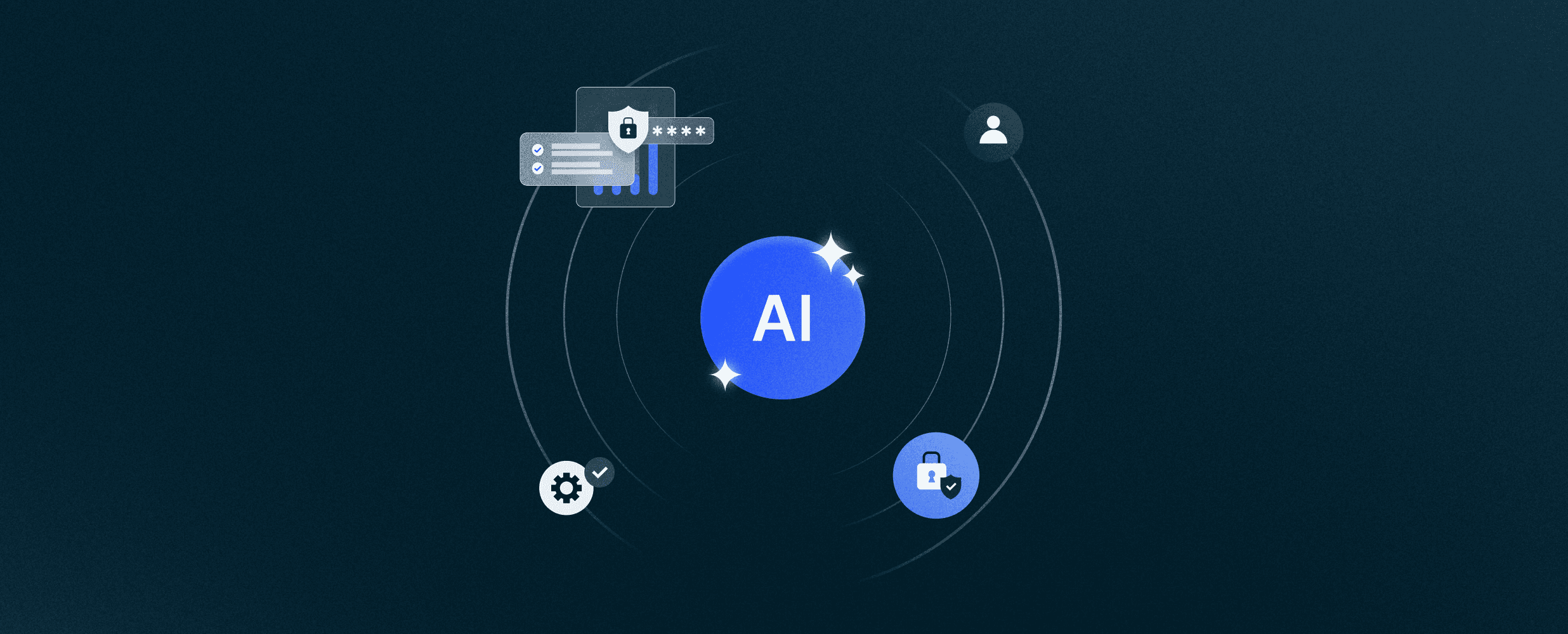What is Responsible AI and Why Should You Care?
We're defining Responsible AI, exploring why it matters more than ever, and breaking down how Governance, Risk, and Compliance (GRC) platforms like Drata and SafeBase can help organizations deploy AI confidently and ethically.
AI is moving fast–so fast, in fact, that many leaders are racing to implement new capabilities without fully understanding the risks they carry. As artificial intelligence transforms how organizations detect threats, automate tasks, and deliver value to customers, one thing has become clear: AI without governance is a liability.
That’s where responsible AI comes in—not just as a set of ethical ideals, but as a strategic imperative for any organization using or building with AI. The businesses that succeed in this next wave of innovation will be those that embed transparency, accountability, observability, and risk management into every layer of their AI programs.
So, how do you do that at scale—and how do modern GRC platforms like Drata and SafeBase make it possible? Let’s dive in.
What is Responsible AI?
Responsible AI refers to the governance, oversight, and ethical deployment of artificial intelligence systems across your organization. It’s about ensuring that models are auditable, secure, explainable, and aligned with both regulatory frameworks and your company’s values.
According to Gartner, organizations that operationalize AI transparency and governance will achieve 50% more business value from their AI initiatives by 2026 than those that don’t.
Responsible AI isn’t just about fairness and ethics—it’s about building trust with customers, preempting regulatory action, and reducing business risk.
Why Decision-Makers Need to Act Now
Responsible AI is no longer just a talking point for technical teams—it’s becoming a top-down priority that demands executive ownership and cross-functional coordination.
The Stakes are Rising
New regulations are landing: From the EU AI Act to the White House’s Executive Order on Safe, Secure, and Trustworthy AI, the compliance bar is being raised globally.
Customers and partners are asking hard questions: Your buyers want to know how AI is used in your products and what controls you have in place.
The attack surface is expanding: AI systems can introduce new vulnerabilities—model manipulation, hallucinations, data leakage—and may automate non-compliant or discriminatory behavior at scale.
In short, Responsible AI is no longer a “nice to have.” It’s a business-critical requirement.
From Principles to Execution: Strategic Steps for Responsible AI
To lead on AI responsibly, organizations must go beyond the values and build infrastructure that enforces them. That includes:
Assigning Governance Ownership
Appoint a Responsible AI lead, steering committee, or ethics council to oversee risk evaluations and policy decisions across AI initiatives.
Mapping AI Use Cases
Inventory where and how AI is being used—internally, (e.g., threat detection, recruiting automation) and externally, (e.g., in your customer-facing product). Classify by risk level.
Building AI-Specific Control Frameworks
Use standards like the NIST AI Risk Management Framework and ISO 42001 to shape internal policies. Align your AI systems with existing GRC practices.
Enforcing Controls Across the Lifecycle
From model development to deployment, ensure your teams can prove:
Human oversight exists.
Inputs and outputs are monitored.
Controls are tested regularly.
Audit trails are captured.
Communicating Trust to Stakeholders
Demonstrate how your Responsible AI posture reduces risk—through security reviews, vendor assessments, and executive reporting.
The Role of GRC in Responsible AI
Responsible AI doesn’t live in a vacuum—it sits at the intersection of governance, risk, and compliance. That’s why GRC teams are increasingly being pulled into AI oversight.
Ask yourself:
Can your organization prove how AI-related decisions are made and validated?
Are third-party vendors using AI governed by your same standards?
Is AI integrated into your risk register or compliance programs?
A modern GRC approach makes this possible—providing the infrastructure to assess AI risk, document controls, automate monitoring, and demonstrate accountability.
How Drata and SafeBase Support Responsible AI
Modern GRC platforms like Drata and SafeBase empower companies to not just use AI—but use it responsibly, transparently, and in ways that stand up to scrutiny.
These tools work hand-in-hand to provide end-to-end support for Responsible AI initiatives.
Drata: AI Governance Meets Automation
Drata enables security and GRC leaders to operationalize Responsible AI by automating the controls and monitoring needed to support audit-ready, trustworthy AI usage.
With Drata, you can:
Map AI-specific risks and controls to frameworks like NIST AI RMF and ISO 42001.
Leverage AI to quickly respond to security questionnaires with minimal manual effort and a high degree of accuracy.
Extract key compliance details from completed vendor questionnaires to streamline vendor security reviews with AI Questionnaire Summaries.
Whether your teams are building with AI or integrating third-party AI tools, Drata helps ensure you can move fast—without compromising governance.
SafeBase: Communicate Trust in the Age of AI
AI adoption is creating a new class of security and compliance questions during the sales cycle. SafeBase helps you proactively address these concerns through a centralized, always-on Trust Center.
With SafeBase, you can:
Accelerate buyer confidence with a real-time Trust Center that showcases your responsible AI and security posture.
Eliminate friction in the review process by proactively sharing the right documentation with the right stakeholders, on demand.
Cut time spent on security questionnaires with AI-powered automation that delivers fast, accurate, and compliant responses. In fact, Crossbeam used SafeBase to practically eliminate security questionnaires.
Maintain trusted, up-to-date answers by using AI to remove stale content, eliminate duplicates, and surface the most relevant insights from your knowledge base.
Curious what questions your customers may be asking? Check out the top AI security review questions companies are being asked today.
Responsible AI isn’t just a technical challenge—it’s an executive responsibility. As innovation accelerates, organizations that bake ResponsibleAI into their GRC DNA will have a clear advantage.
They’ll build faster, sell with more confidence, and win trust at a time when it’s never been more valuable—or more at risk.
Want to learn how Drata and SafeBase can help you operationalize Responsible AI today? Schedule a demo.
FAQ: Governance, Risk, and Responsible AI
We’re diving into some of the most commonly asked questions about Responsible AI.
What is Responsible AI?
Responsible AI refers to the governance and oversight of AI systems to ensure they are ethical, secure, auditable, and aligned with regulatory and business standards.
Why should executives care about Responsible AI?
Poorly governed AI can introduce regulatory risk, reputational damage, and security vulnerabilities. Responsible AI is now table stakes for trust, growth, and long-term business value.
What frameworks should organizations follow?
The NIST AI RMF, ISO 42001, and EU AI Act are emerging as key standards for Responsible AI implementation and compliance.
How does Responsible AI tie into GRC?
It requires the same structures as any other high-risk system: clear ownership, documented controls, automated monitoring, and evidence for audits and assessments.
How do Drata and SafeBase help with Responsible AI?
Drata automates GRC controls and monitoring for AI systems. SafeBase helps companies proactively communicate their Responsible AI posture to customers and stakeholders.





